2021 in Review: The Dry Bulk and Tanker Markets
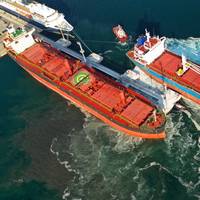
The Signal Group offers an exhaustive overview of the trends in the dry bulk and tanker markets that both defined 2021, and offer a glimpse as to what might be in store for 2022 and beyond. The report is excerpted in short below; to see the full report CLICK HERE.Using Signal Ocean data, give the insight to analyze the trends and changes across the major vessel sizes in the dry and tanker freight market for 2021. This time last year, Signal Group analyzed the effects of the coronavirus pandemic on commercial shipping with a focus on dirty tankers - VLCC…
EEX Launches Dry Freight Index Showing Cost of Carbon
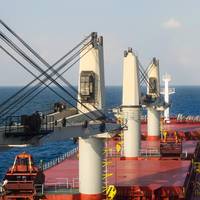
German energy exchange EEX on Monday launched a zero carbon freight index (ZCFI) which combines the bourse's dry freight and emission permits prices to show operators how accounting for carbon emissions could affect freights.Decarbonization of the shipping value chain is already well underway and will continue to be front and center for ship owners, charterers and financiers in the decade ahead.The ZCFI comes as the European Union is due to unveil climate legislation this week which is likely to include the extension of the EU emissions trading system (ETS) to the maritime sector.As a conseque
Cargo Ship Sinks in Black Sea, Off Turkey
A Palau-flagged freight ship has sunk off the coast of Turkey's Black Sea province of Bartin, killing two crew members, the coast guard said on Sunday, adding that search and rescue operations for more crew members were continuing.Bartin Governor Sinan Guner had initially said the ship, the ARVIN, was a Russian dry freight vessel that sank off the coast of the Inkumu region in poor weather, but later corrected that."The ARVIN ship attempted to take refuge at the Bartin port due to poor weather conditions as it carried cargo from Georgia to Bulgaria," Guner was quoted as saying by state-owned Anadolu news agency.The coast guard said the ship had sunk after taking in water amid heavy weather conditions.
Dry Freight Rates Buoyed by Scrubber Refit Work
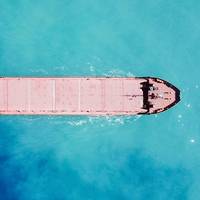
With the world's largest dry cargo ships coming out of service for refits to comply with tougher rules on emissions, charter rates are expected to remain strong, a top Cargill executive said, after posting 7-fold gains already this year."There are a lot of ships - especially on the capesizes - that will go into scrubber fitting which basically means they will be out of service for at least 25 days each to do so," Jan Dieleman, president of trading firm Cargill's ocean transportation business…
Seaborne Reefer Trade Continues to Expand: Drewry
Despite moderating perishable seaborne trade growth, continued modal shift will sustain expansion in the containerised reefer trade and so support freight rate development, according to Drewry’s latest Reefer Shipping Annual Review and Forecast 2018/19 report, by global shipping consultancy Drewry.Global seaborne reefer trade continues to expand, posting a gain of over 5% in 2017 to 124 million tonnes, a big improvement on trend growth over the past 10 years of 3.6% a year. Underpinning this progress was strong growth in banana, meat and fish trades.Drewry estimates that containerised reefer traffic expanded by 8% in 2017, outpacing the growth in overall seaborne reefer trade.
Container Equipment Leasing Rates Under Pressure
Leasing companies are tightening their stranglehold over container equipment ownership as ocean carriers cut back on new purchasing and sell older inventory for leaseback, Drewry's report said. But the lessors’ rapid expansion has come at a price as the combination of low borrowing costs and competitive pressures has had an adverse impact on lease rates and accompanying investment returns. Lease rates slumped to a new low in 2015 and although the improved market climate since has prompted some recovery, they remain well below the long-term average. The pressure on hire rates is not just confined to the dry sector, as reefer and tank leasing rates have suffered in a similar way.
Singamas Back in the Black
Singamas Container Holdings Limited, Hong Kong-listed container manufacturing company, turned around in the first half of this year, thanks to a 45 per cent surge in its revenue mainly due to a jump in container sales and a higher average unit. "During the review period, the recovering global economy, rise in international trade and the corresponding pick up in shipping volume as well as the strengthening market sentiment have been favourable for the container industry, leading to the improvement of container demand and a rise of average selling price (ASP)," said a statement from the company. The Group’s consolidated revenue amounted to US$595,042,000, a significant rise of 45.0% over the revenue of US$410,277,000 obtained in the corresponding period last year.
Baltic Index Drops as Cyclone Dampens Demand

The Baltic Exchange's main sea freight index, tracking rates for ships carrying dry bulk commodities, fell on Friday as closure of mines and ports in Australia due to a cyclone weighed on demand for capesize vessels. Cyclone Debbie, which struck Queensland this week, caused extensive flooding and social disruption and dampened chartering activity after coal mines were closed. The overall index, which factors in rates for capesize, panamax, supramax and handysize shipping vessels, fell 27 points, or 2 percent, to 1,297 points. The index on Wednesday hit its highest level since Nov. 11, 2014.
Baltic Index Snaps Five-Session Winning Streak
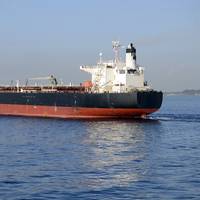
The Baltic Exchange's main sea freight index, tracking rates for ships carrying dry bulk commodities, fell on Thursday after five straight sessions of gains as capesize rates dropped. The overall index, which factors in rates for capesize, panamax, supramax and handysize shipping vessels, fell 14 points, or 1.1 percent, to 1,324 points. The index on Wednesday hit its highest level since Nov. 11, 2014. The capesize index fell 65 points or 2.4 percent to 2,690 points. Average daily earnings for capesizes…
Baltic Index Hits Two-year High

The Baltic Exchange's main sea freight index, which tracks rates for dry-bulk carriers, hit a more than two-year high on Wednesday as rates for panamax vessels rose. The overall index, which factors in rates for capesize, panamax, supramax and handysize shipping vessels, was up 5 points at 1,338 points, its highest level since Nov. 11, 2014. The panamax index was up 40 points or 3.1 percent, at 1,346 points. Average daily earnings for panamaxes, which usually carry coal or grain cargoes of about 60,000 to 70,000 tonnes, rose $318 to $10,805.
Baltic Index Streaks to Highest Level since 2014
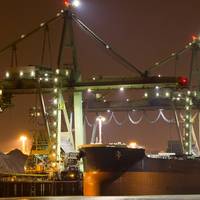
The Baltic Exchange's main sea freight index, which tracks rates for ships carrying dry bulk commodities, continued its gaining streak on Tuesday with a fresh more-than-two-year high, driven by strong demand for large iron ore vessels. The overall index, which factors in rates for capesize, panamax, supramax and handysize shipping vessels, was up 51 points, or 4 percent, at 1,333 points, its highest level since November 11, 2014. The capesize index climbed 145 points, or 5.5 percent, to 2,765 points, its best since November 25, 2014.
Benchmarking Against Peers Upheld Among BCOs
International transport and logistics executives are increasingly benchmarking their companies’ costs and supplier terms in ocean transport contracts, according to data gathered by Drewry Supply Chain Advisors. In the past 6 months, the ocean transport spend under carrier contracts benchmarked by Beneficial Cargo Owners via the Drewry Benchmarking Club global initiative increased by 50%, to $2.2 billion; the number of benchmarked routes rose by 81% and the volume of benchmarked dry container teu jumped by 67%. FMCG companies and retailers are generally ahead of industrial manufacturers when it comes to using benchmarking to negotiate contracts.
Growth in the Leased Container Equipment Fleet to Slow
Following markedly slow growth of just 3.5% in 2015 due to decreased rental demand, the global leased container equipment operating fleet is forecast to increase by little more than 1% in 2016, according to the latest edition of the Container Leasing Industry Annual Report 2016, published by global shipping consultancy Drewry. By the end of 2015, leasing companies were again having to shift a sizeable factory stockpile, as well as contending with rental rates at an all-time low. New and used container prices had also fallen to their lowest in more than a decade because of weaker demand and a recent steep drop in the cost of steel and factory running costs.
New Container Equipment Prices to Fall to Record Lows
Cheaper production and material costs as well as weaker demand has driven the price of new container equipment down to record lows and is forecast to fall further during 2016, according to the latest edition of the Container Census report published by global shipping consultancy Drewry. The container equipment index price at the end of 2015 was $1,450 per CEU equivalent (or 20ft standard), down from $1,900 a year earlier. The average price for the year was $1,750, down 15% on 2014 and by the end of 2015 the index had fallen close to the all-time low of 2001-02. “Some of the recent price fall has resulted from the weakening state of the global economy and the decline in trade demand,” said Drewry’s lead analyst for container equipment Andrew Foxcroft.
Container Inspection Standards to be Harmonized
In a significant breakthrough for the container shipping business, the two criteria currently used when inspecting containers during the interchange process between operators and leasing companies are now to be harmonised. Until now, there have been two different interchange inspection standards: the “IICL-5” criteria (managed by the Institute of International Container Lessors); and the “Common Interchange Criteria”, administered by the CIC Group of leasing companies, comprising five of the world’s leading container lessors (Triton Container, Seaco, Florens Container Services, CAI and Blue Sky Intermodal) who represent over 50 percent of the world’s leased dry freight container fleet.
Container Equipment Prices Nosedive - Drewry
Prices for new dry freight containers declined to their lowest point since 2002 during first-quarter 2016 and are still going down, according to the latest edition of the Container Equipment Insight, published by global shipping consultancy Drewry. Average container equipment prices fell 15% through the first quarter, as the deteriorating outlook for trade growth impacted pricing. As a consequence of this and the fact that steel and other material costs are no longer in decline, Drewry estimates that the container manufacturing sector made a small net loss in the first quarter of 2016. Used dry freight container prices also declined further, to a level not seen since in almost a decade.
Baltic Index Up On Stronger Rates
The Baltic Exchange's main sea freight index, which tracks rates for ships carrying dry bulk commodities, rose on Friday due to higher demand for capesizes and gains across smaller vessel segments. The overall index, which factors in rates for capesize, panamax, supramax and handysize shipping vessels, was up 18 points, or about 3 percent to 688 points. The capesize index, rose 81 points, or about 8 percent to 1,085 points. Average daily earnings for capesizes, which typically transport 150,000-tonne cargoes such as iron ore and coal, rose $577 to $8,216. Iron ore is on track to post its biggest weekly gain ever after a rapid rise that lifted it to its strongest since June 2015 as a rally in Chinese steel prices burnished appetite for the raw material.
Baltic Index Rises to Five-month High
The Baltic Exchange's main sea freight index tracking rates for ships carrying dry bulk commodities, on Tuesday rose to its highest in over five months on improved rates across vessel segments. The overall index, which factors in rates for capesize, panamax, supramax and handysize shipping vessels, gained 12 points, or 1.82 percent to 671 points. While current earnings are barely covering direct vessel operating costs, rates are on the rise primarily due to stronger Chinese steel prices boosting seaborne iron ore trade, ship brokerage Clarksons Platou Securities said in a note on Tuesday. Shipments of iron ore account for about a third of seaborne volumes on the larger capesizes, and iron ore price changes are a key factor for dry freight.
Baltic Index up on Improved Vessel Rates
The Baltic Exchange's main sea freight index, tracking rates for ships carrying dry bulk commodities, edged higher on Tuesday on steady demand across vessel segments. The overall index, which factors in rates for capesize, panamax, supramax and handysize shipping vessels, rose five points or about 1 percent to 560 points. The index has gained 172 points or about 45 percent over the last month. The capesize index rose 11 points to 744 points. Average daily earnings for capesizes, which typically transport 150,000-tonne cargoes such as iron ore and coal, rose $4 to $5,537. Spot iron ore climbed nearly 5 percent to a three-week peak on Monday and could similarly stretch gains amid firmer ferrous futures.
Baltic Index Perks up on Capesize Demand
The Baltic Exchange's main sea freight index, tracking rates for ships carrying dry bulk commodities, rose on Thursday on bigger gains for the capesize index and improved activity across vessel segments. The overall index, which factors in rates for capesize, panamax, supramax and handysize shipping vessels, climbed 15 points or 3.62 percent to 429 points. The index has gained about 47 percent since touching its lowest of 290 points on Feb. 10. The rally, however, will have to last longer for a sustainable recovery of the shipping industry that has been facing an oversupply of vessels and a slowdown in demand for quite some time now, analysts said. The capesize index jumped 60 points, or 28.57 percent, to 270 points.
Dieleman Takes over as Cargill Shipping Head
Commodities trader Cargill has appointed a new head of its shipping business, weeks after announcing it would close its London freight unit amid a worsening global seaborne market. The dry bulk sector, which transports commodities such as coal and grain, continues to suffer from too many ships available for hire and slowing demand for goods, especially from top importer China, which has led to freight rates slumping to record lows. Cargill, a leading shipping player, said on Friday Jan Dieleman had taken the helm since March 1 of its ocean transportation business, succeeding Roger Janson who had run the division since 2011. Dieleman, who had run Cargill's North America power and gas business since 2014, will operate from the group's freight headquarters in Geneva.
Cargill to Close London Shipping Unit as Sector Crisis Worsens
Global commodities trader Cargill will close its London shipping office in another sign of the worsening crisis battering the dry freight market, the company said on Thursday. Financial markets have been in turmoil since the start of the year due to worries over the health of the world economy, China's finances and the fallout from low oil prices. The dry bulk sector -- which transports commodities such as coal and grain -- has been particularly hurt by slower Chinese business at a time when the sector is struggling with huge overcapacity. Cargill, a leading shipping player, said the move to shut the London office of its ocean transport business was because the dry freight market…
Mercator Exists Dry Bulk, Divests Fleet
As a part of an ongoing portfolio restructuring exercise following booking of losses for three years in a row, Mercator Limited has decided to exit dry bulk business carried on by its arm Mercator Lines(Singapore) Ltd(MLS). Mercator has 11 bulkers in its fleet, ranging between 70,000 and 92,50 dwt built from 2001 to 2010. The Board of Directors of the company in a meeting have approved to stake sale proposal and a sole placement agreement has been appointed to identify the prospective investor/buyer for the sale of entire stake in Singapore Stock Exchange listed MLS. The bulk carriers business has been the worst affected by the downturn in the shipping cycle with the Baltic Dry Freight having collapsed from a level of 11…







